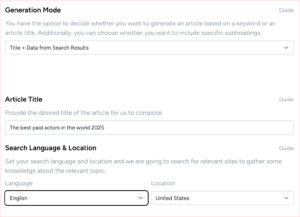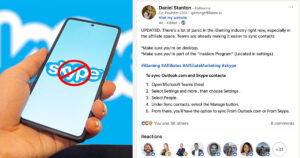In the ever-evolving landscape of education technology, ChatGPT stands out as a revolutionary tool that’s reshaping how we create and distribute learning materials. Whether you’re a seasoned educator or a budding content creator, understanding how to harness the power of this AI-driven platform can transform the educational experience.
This article dives into the practicalities and potentials of using ChatGPT to craft engaging, informative, and accessible educational content. From automating routine tasks to generating creative educational resources, we’ll explore how this technology isn’t just assisting educators—it’s empowering them to innovate and inspire in ways that weren’t possible before.
Benefits of Using ChatGPT
ChatGPT offers numerous advantages, enhancing your learning experience by providing instant, tailored responses. It’s accessible anytime, meaning you can learn at your own pace, whenever you’re curious. This flexibility ensures you’re not bound by the constraints of traditional classroom schedules.
Additionally, the interaction with an AI like ChatGPT can be incredibly engaging. You’ll find that it adapts to your level of understanding, pushing you just enough to challenge you without overwhelming you.
Moreover, ChatGPT can cover a vast range of topics, from complex scientific concepts to historical events, making it an invaluable resource for broadening your knowledge base. It’s like having a personal tutor available at the click of a button, ready to assist you in deepening your understanding of virtually any subject.
Steps to Generate Content
Let’s explore the steps you can take to generate content using ChatGPT. First, clearly define your topic and objectives to ensure the content is focused and relevant.
Next, draft a set of questions or prompts that address these objectives, which will guide ChatGPT in generating the desired content.
Then, input these prompts into ChatGPT and review the outputs. It’s crucial to fine-tune the prompts based on the initial responses to better align with your educational goals.
Lastly, edit and refine the content for accuracy, clarity, and relevance to your audience. This iterative process helps in producing tailored educational materials that effectively convey the intended knowledge and concepts.
Enhancing Student Engagement
Engaging students effectively boosts their learning outcomes and overall educational experience. When you use interactive tools like ChatGPT, you’re not just delivering content; you’re inviting participation. Imagine transforming a traditional lesson into a dynamic dialogue where students ask questions and receive instant, tailored responses. This interaction keeps the material alive and relevant, sparking curiosity and encouraging deeper exploration.
You can also incorporate multimedia elements, such as videos or interactive quizzes, directly into the ChatGPT interface, making the learning process more engaging. By turning passive learning into an active experience, you help students develop critical thinking skills and retain information more effectively.
Remember, the more interactive the learning, the greater the engagement and enthusiasm in your classroom.
Personalizing Learning Experiences
ChatGPT allows you to tailor educational content to meet each student’s unique learning needs and preferences. By integrating this AI tool, you can design lessons that adapt to varying skill levels and learning speeds. Imagine creating multiple pathways within a single lesson plan, ensuring that everyone from the fast learner to the more deliberate thinker remains engaged and challenged.
You’ll also find that it’s easier to accommodate different learning styles. Whether a student thrives on visual aids, interactive tasks, or detailed readings, you can craft content that resonates best with them. This personalized approach not only enhances learning outcomes but also boosts students’ confidence as they feel their individual needs are being recognized and met.
Improving Content Relevance
ChatGPT also enhances the relevance of educational content by aligning it with current trends and student interests. By analyzing popular topics and emerging issues, it ensures that you’re learning about what’s current and impactful. This relevance not only keeps you engaged but also deepens your understanding by connecting new knowledge to everyday experiences.
Moreover, ChatGPT tailors content to meet diverse learning needs. It sifts through vast amounts of data to identify what resonates most with different age groups, cultural backgrounds, and learning styles. This targeted approach makes learning more effective and enjoyable for you. You’ll find the content not only informative but also incredibly applicable to real-world scenarios, enhancing both your interest and retention rates.
Incorporating Interactive Elements
ChatGPT enhances engagement by incorporating interactive elements into educational content, allowing you to actively participate in your learning process. Imagine diving into lessons where you’re not just a passive recipient but a vital part of the experience. This approach includes quizzes, simulations, and real-time problem-solving tasks that make learning dynamic and memorable.
You’re prompted to think critically and apply concepts immediately, which reinforces your understanding. Interactive elements also adapt to your input, offering personalized pathways through the content.
This means you aren’t just moving through a static set of information but engaging with a responsive system that grows with you, ensuring that your educational journey is as effective as it is exciting.
Ensuring Educational Quality
Ensuring educational quality in ChatGPT-driven content means you’re always interacting with accurately designed and reliable information. To achieve this, it’s crucial that the data feeding into ChatGPT is well-curated and up-to-date. You must also verify the content’s accuracy regularly, ensuring it aligns with current knowledge and standards in education.
Moreover, integrating peer reviews can elevate the credibility of the content. Involve experts in the relevant fields to assess and provide feedback on the generated material. This step helps to refine the information and ensures that it meets educational standards.
Additionally, continuous updates and improvements based on feedback and new research are essential to maintain the integrity and relevance of the educational content you’re providing.
Overcoming Common Challenges
Addressing the common challenges in using ChatGPT for educational content involves understanding and mitigating its limitations. Firstly, you’ll need to constantly update the information it provides, as ChatGPT’s knowledge is static and ends at its last training cut-off. This means it might not have the latest data or developments in your field.
Secondly, while ChatGPT can generate accurate content, it’s not infallible. Always verify the facts and supplement with up-to-date research.
You’ll also face the challenge of bias. ChatGPT’s responses can inadvertently reflect biases present in the training data. Actively seeking diverse sources and perspectives when reviewing the generated content can help you minimize this issue.
Lastly, encourage critical thinking by questioning and discussing the generated content with others.
How can ChatGPT be used to accommodate different learning styles in educational content?
To accommodate different learning, ChatGPT can help by tailoring explanations and providing visual aids.
It can also offer interactive exercises and adapt content formats to suit various preferences, ensuring a personalized learning experience for all students.
What are the ethical considerations when using AI-generated content in educational settings?
When using AI-generated content in education, ethical considerations like data privacy, bias, and source credibility are crucial.
Ensure transparency, diverse perspectives, and regular monitoring to maintain integrity and uphold educational standards.
How can educators ensure the accuracy of the content created by ChatGPT?
To ensure accuracy when using ChatGPT, you must fact-check the generated content.
Provide clear prompts, and review and correct any errors.
By actively engaging with the content and verifying information, you can maintain accuracy.
Conclusion
In conclusion, using ChatGPT to create educational content can streamline the process and enhance engagement. With its ability to generate diverse and accurate information in various formats, educators can easily develop interactive lessons and materials.
By leveraging this technology, you can improve learning outcomes and make the educational experience more dynamic and engaging for students.
Embrace the power of ChatGPT to revolutionize your teaching approach today.





